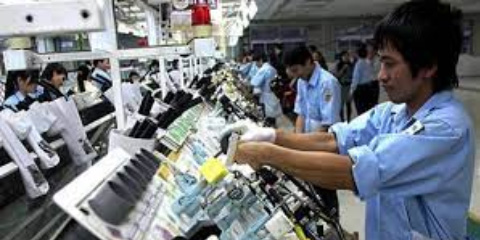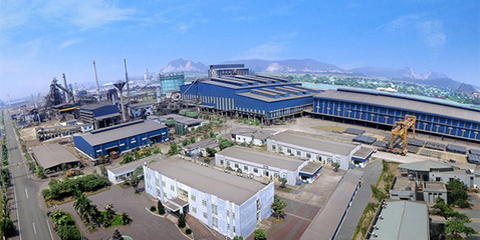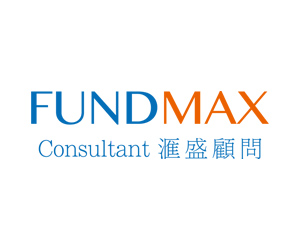Want to be in the loop?
subscribe to
our notification
Business News
FRESH TARIFF CUTS SET TO ENCOURAGE MORE TRADE
Vietnam will soon be implementing the country’s commitments to reduce and remove export and import tariffs under the Comprehensive and Progressive Agreement for Trans-Pacific Partnership, allowing itself to attract more investment from and open up to other nations in the trading bloc.
The Ministry of Finance last week submitted a proposal to the prime minister regarding the enactment of a decree on a special preferential import and export tariff schedule for the country, by which it could implement its commitments under the Comprehensive and Progressive Agreement for Trans-Pacific Partnership (CPTPP) in the 2019-2022 period.
The decree, which follows the National Assembly’s CPTPP adoption on November 12, 2018 and the deal’s entry into force for Vietnam on January 14, is expected to take effect during the first quarter of 2019.
Regarding the export tariff commitments of the CPTPP, the country pledges to remove all export tariffs for the majority of items that are currently subject to this type of tariff under a 5-15 year roadmap. Some important items such as fossil coal, crude oil, a range of different ores, and up to 70 natural minerals will be allowed to continue their export tariffs.
The nation’s preferential export tariff schedule includes 519 tariff lines, with different levels of average tax rates cut down gradually, with 19.1 per cent in 2019, 17.4 per cent in 2020, 15.7 per cent in 2021, and 14.1 per cent in 2022.
As for import tariff commitments in the CPTPP, Vietnam has promised to erase nearly 100 per cent of tariff lines under the roadmap. Specifically, 65.8 per cent of tariff lines will see a 0 per cent import tax rate immediately after the CPTPP takes effect. Additionally, in the fourth and 11th years following entry into the deal, a total of 86.5 and then 97.8 per cent of tariff lines will also enjoy a 0 per cent import tax rate.
The remaining items will see a 0 per cent import tax rate from the 16th year, depending on tariff quotas. This preferential import tariff schedule includes 10,216 tariff lines. Average tax rates will also enjoy a gradual reduction, from 9.1 per cent in 2019 to 7.7 per cent in 2020, 6.3 per cent in 2021, and 4.8 per cent in 2022.
According to a CPTPP governmental report recently delivered to the National Assembly, the CPTPP will greatly benefit the nation as the trading bloc’s total GDP is about $11 trillion, or 13.5 per cent of the global GDP. The bloc, which also includes Japan, the world’s third-largest economy, has a population of more than 500 million people.
Under a recent study conducted by the Ministry of Planning and Investment (MPI), the CPTPP can grow Vietnam’s GDP and export turnover by 1.32 and 4.04 per cent, respectively, by 2035. Total import turnover will also likely rise by an additional 3.8 per cent until 2035.
“In terms of investment attraction, the CPTPP commitments on services and investment will help the nation improve its investment climate and attract more foreign direct investment (FDI),” said the report. “In terms of institutional reforms, the CPTPP will help further improve local businesses and the investment climate in favour of investors.”
According to the study, the CPTPP will also add an additional 20,000-26,000 jobs to Vietnam per year.
Under the MPI’s statistics, as of December 20, 2018, CPTPP nations had 7,570 investment projects in the country, registered at over $124 billion. This figure accounts for 36.45 per cent of the country’s total registered FDI, with Australia accounting for $1.865 billion, Brunei for $1 billion, Canada for $5 billion, Chile for $15,000, Japan for $57 billion, Malaysia for $12.5 billion, Mexico for $58,000, New Zealand for $92.1 million, and Singapore for $46.62 billion.
Source: VIR
Related News

CUSTOMS BUDGET REVENUE EXPERIENCES 3% DECLINE IN Q1
Vietnam’s import and export value reached a total of US$145.59 billion in the first quarter (Q1) of 2024, marking a year-on-year growth of 18.2%. However, the customs budget revenue saw a 3% year-on-year decline, amounting to VND71,520 billion in the quarter, thereby achieving 19.1% of the full-year target.

RAPID LAW IMPLEMENTATION MAY PROPEL MARKET FORTUNES
“Investors and developers are looking forward to the implementation of the new law, which will remove obstacles for a range of projects that are struggling due to stalled procedures and lack of legality. For them, the earlier the better,” he said.

NATION URGED TO BUILD ON ECO-IP MODEL
Industrial parks (IPs) involved in an initiative that aims to help push them into the realm of being classed as eco-parks have seen improvements across a string of indicators, according to a review event in Ho Chi Minh City last week.

YEN LU INDUSTRIAL PARK: NEW DESTINATION FOR INVESTORS
Bac Giang is a destination chosen by many domestic and foreign investors thanks to its locational advantages and its most opening and favorable investment policies. Assisted by local authorities, Capella Land Joint Stock Company has effectively invested in industrial zones, especially Yen Lu Industrial Park - a new destination for investors, to contribute to the province’s success in investment attraction.

OPTIMIZING LEGAL AND REGULATORY FRAMEWORKS FOR EFFICIENT PUBLIC INVESTMENT DISBURSEMENT
According to the Ministry of Planning and Investment, a 1% increase in public investment raises GDP by 0.058%, and each VND1 disbursed stimulates an extra VND1.61 from the non-state sector. However, plan implementation often falls short at around 80% annually, despite government efforts.

NATION URGED TO BUILD ON ECO-IP MODEL
For the 2020-2024 project, three IPs were selected for the transformation including Deep C Industrial Zones in the northern city of Haiphong, AMATA City Bien Hoa in the southern province of Dong Nai, and Hiep Phuoc IP in Ho Chi Minh City. Over the last four years, the level of compliance with the international framework on eco-IPs for all pilot complexes has increased in terms of environment, economy, and management.
































